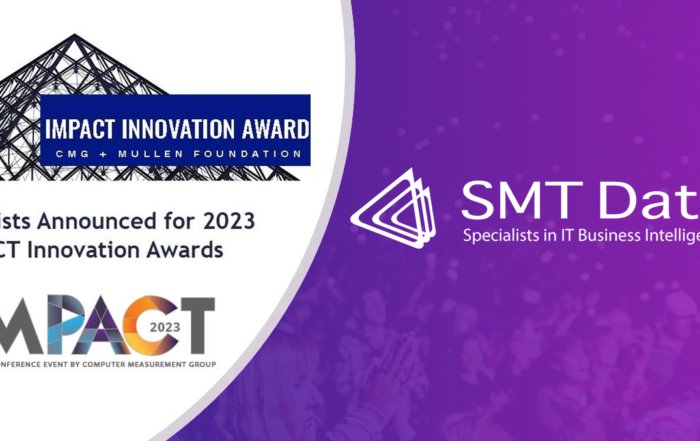Services
SMT Data supports clients with several different services, mainly based on the utilization of the ITBI solutions. SMT Data prides itself of having among its consultants some of the world’s most renown experts within the fields of capacity and performance management. Our consultants have many years of experience in helping customers with smaller and larger projects aimed at improving the transparency into the IT infrastructure and carrying out specific projects.
We deliver enterprise services, services specific to Mainframe environments both on-site, and outsourced, and services specific to Distributed Platforms also in this case, on-site, cloud-hosted and outsourced.
Beside the services listed below, we offer specialized ad-hoc consultancy within various subdisciplines within capacity and performance and we can support your specific project adding highly qualified skills to your internal team. These areas include z/OS, Work Load Manager (WLM), Coupling Facility, DB2, CICS, MQ, WAS, etc.
Our consultants have many years of experience especially within Financial Institutions, Insurance Companies, Retail, Telecommunications, Government Institutions, Manufacturing, and Service Providers. In general costumers with substantial IT installations.
Enterprise services
Managed Services for ITBI Enterprise
SMT Data’s Managed Services help ensure that the customer gets the most out of the ITBI solutions. By making use of the managed services, the customer’s own in-house requirements for resources and skills are reduced. The services can also be used for skills transfer to the customer’s own staff.
Our managed services allow you to focus on your daily tasks while securing that you achieve your objectives with the implementation of strategic continuous optimization of the utilization of your IT infrastructure.
For more detailed information, see our product sheet.
Timeframe
Ongoing service
ITBI-based capacity & performance Health-check
Based on the application of ITBI Enterprise solution, this service offers customers an end-to-end analysis of the mainframe and server utilization and delivers recommendations for capacity and performance optimization leading to cost reduction and service improvements.
Timeframe
1-2 Months
Before and after study with ITBI – Enterprise
Based on the application of the ITBI Enterprise solution, this service helps customers make fact-based decisions about capacity and performance going into a major transition, monitor the results during the transition and finally document and understand the results after the transition.
A major transition can be a technology upgrade, moving to a datacenter, outsourcing or rehosting, moving to the cloud, a merger, an acquisitions or any other major transition that can affect capacity and performance.
For more information, see our product sheet.
Timeframe
3-6 Months
IBM Z Services
Managed Services for ITBI for IBM Z
SMT Data’s Managed Services help ensure that the customer gets the most out of the ITBI solutions. By making use of the managed services, the customer’s own in-house requirements for resources and skills are reduced. The services can also be used for skills transfer to the customer’s own staff.
Our managed services allow you to focus on your daily tasks while securing that you achieve your objectives with the implementation of strategic continuous optimization of the utilization of your IT infrastructure.
For more detailed information, see our product sheet.
Timeframe
Ongoing service
Mainframe Modernization
ITBI can support migration partially or fully away from Mainframe with insight into the performance and capacity impact.
The mainframe modernization service keeps the customer on track when offloading.
It helps monitor the capacity and performance baselines on both mainframe and the receiving distributed platform.
This service creates transparency of cost and performance impact when:
- Offloading front end functionality to distributed platforms
- Offloading one application at a time
- Offloading major applications (or all) from the mainframe
For more detailed information, see our product sheet.
Timeframe
Varies depending on complexity.
Mainframe Cost Optimization
The objective is to deliver significant cost savings through optimization of the customer’s mainframe environment.
This optimization is based on a deep analysis of the mainframe setup and cost drivers.
The analysis is made using ITBI and other tools. SMT Data carries out the analysis, identifies specific areas for optimization and assists the customer in carrying out those recommendations.
For more detailed information, see our product sheet.
Timeframe
3 – 6 months
Activity-based Mainframe Cost distribution
In order to keep costs under control it is essential to create transparency into the mainframe cost drivers, both in technical and in business terms.
This information can be used in each relevant business unit to ensure accountability and alignment of behavior.
Cost Distribution is equally relevant for outsourcers who charge their customers based on utilization, as for outsourced customers or for installations with their own mainframe, who are interested in internal show-back or charge-back.
The objective of this offering is to assist the customer in either implementing a mainframe cost distribution or in making existing cost distribution methods more transparent and more in line with the actual underlying costs. Cost distribution will help the customer get the overview of which business units are using what and for how much.
For more detailed information, see our product sheet.
Timeframe
Varies depending on complexity. First report available after 1 month.
Mainframe Outsourcing Health-check
Outsourced mainframe customers often lack transparency into how well their outsourcer manages the mainframe capacity and performance, relative to what is optimal for the customer.
The customer seldom has the data to communicate clearly with the outsourcer on capacity and performance issues. In many cases, the customer doesn’t even have the ability to validate whether the outsourcer is invoicing in a correct manner relative to the contract or if it is done in a fair manner relative to industry ‘best practice’.
SMT Data receives log-data (SMF, RMF a.o.) from the customer’s mainframe environment as well as input regarding the billing model agreed with the outsourcer.
Based on this information SMT Data delivers findings and recommendations which can lead to significant cost saving.
For more detailed information, see our product sheet.
Read our whitepaper about How well is your mainframe outsourcer managing capacity and performance.
Timeframe
1-2 months
The Journey to Tailored Fit Pricing
IBM’s Tailored Fit Pricing (TFP) solutions change the way customers need to think about mainframe capacity costs. For many years, mainframe cost management has been about understanding what is going on during the monthly peak hours, moving workloads away from these peaks if possible, and optimizing what could not be moved. With the introduction of TFP, where customers pay for the total CPU usage during the entire month rather than just at the peak, the focus changes dramatically. The journey to TFP presents many technical and business-related opportunities, but also pitfalls.
This services-offering provides customers an independent, fact-based guidance on the journey to TFP.
SMT Data gathers performance and capacity data from the customer’s mainframe environment to understand the current and historical usage patterns. This input includes SCRT reports plus SMF data. The SMF data is offloaded to SMT Data’s IT Business Intelligence cloud environment (ITBIaaS).
Based on this information SMT Data delivers findings and recommendations such us:
- What are the potential benefits or disadvantages of moving to TFP from the current billing model?,
- How should the TFP agreement be structured based on the customer’s topology and expected usage patterns? and
- What optimizations or other changes should the customer carry out prior to and after moving to TFP?
For more detailed information, see our product sheet.
Timeframe
1-2 months
DevOps Optimization
The focus of DevOps is to get applications into production with increased agility. The objective of this service is to understand the performance and capacity considerations of new applications as they move into production.
ITBI creates transparency into which applications are using how much capacity on the mainframe, and when they are using that capacity.
The objective of this service is to provide a common basis for dialog between the developers and the operations staff about how mainframe capacity costs and performance are affected by the current application portfolio and how changes to applications affect those costs.
For more detailed information see our product sheet.
Timeframe
1 month including 2 workshops
Evaluation of distributed workloads on MIPS usage
Mainframe costs are typically driven by peak utilization, and for most customers that peak is driven by online workload coming from outside the mainframe (distributed platforms/servers).
The developers of these systems have limited transparency into the performance and capacity impact that their distributed programs have on the mainframe.
Furthermore, the mainframe operations staff has limited insight into, or ability to manage, the workload coming to the mainframe from the distributed platform. No one has a complete end-to-end understanding of the situation.
The overall objective of this service is to create transparency of how the distributed- and mainframe components interact with each other, as well as to provide optimization recommendations to the customer.
For more detailed information, see our product sheet.
Timeframe
1-3 months
Understanding the Mainframe “offload boomerang”
Many mainframe customers have moved, or plan to move, applications away from the mainframe and to distributed platforms such as Windows or Linux.
This is done with the expectation of saving MIPS. A common approach is to move the application logic but keep the data on the mainframe as the ”system of record”, at least initially. However, many customers are surprised to find that their mainframe capacity usage can actually increase when this is done. This effect is commonly referred to as the ”offload boomerang”. While offloading the application, logic should reduce the load on the mainframe. In many cases it is replaced by remote data access techniques and these can be much more expensive and a lot less transparent than the code they replace.
This project creates transparency into how the distributed- and mainframe components interact with each other. It also provides optimization recommendations to the customer, recommendations focused primarily on the ”Offload Boomerang”.
For more detailed information, see our product sheet.
Timeframe
1-3 months
Services for Servers
Managed Services for ITBI for Servers
SMT Data’s Managed Services help ensure that the customer gets the most out of the ITBI solutions. By making use of the managed services, the customer’s own in-house requirements for resources and skills are reduced. The services can also be used for skills transfer to the customer’s own staff.
Our managed services allow you to focus on your daily tasks while securing that you achieve your objectives with the implementation of strategic continuous optimization of the utilization of your IT infrastructure.
For more detailed information, see our product sheet.
Timeframe
Ongoing service
Servers Rightsizing Evaluation
In a typical large IT installation, more than half of the servers are either idle or severely underutilized.
Some servers have much more capacity than they need to be able to run their workload smoothly. Some of them are not doing any useful work at all but have simply been forgotten and never decommissioned. SMT Data’s Servers Rightsizing Evaluation uses ITBI to gather capacity and performance data from the Customer’s Windows- and Linux server environments. The data is then used to identify immediate savings on costs of server usage, by finding the optimal server and software license size.
For more detailed information, see our product sheet.
Timeframe
1-2 months
DevOps Optimization
The focus of DevOps is to get applications into production with increased agility. The objective of this service is to understand the performance and capacity considerations of new applications as they move into production.
ITBI creates transparency into which applications are using how much capacity on which servers, and helps understand:
- Do the servers have enough capacity to service the applications? Is there a potential for improved quality of service by providing more capacity?
- Are the servers over configured, compared to the application’s needs? Is there a potential savings from rightsizing the servers?
- Which processes on the servers are the heaviest resource consumers?
This provides an important feedback to the developers that can be used for performance optimization or cost savings.
The objective of this service is to provide a common basis for dialog between the developers and the operations staff about how mainframe capacity costs and performance are affected by the current application portfolio and how changes to applications affect those costs.
For more detailed information see our product sheet.
Timeframe
2-3 months including 2 workshops
Energy Optimization
With energy prices rising in many countries around the world, we need to talk about server rightsizing. In the current energy crisis, prioritizing what is really worth using energy on is not only a matter of improving the companies’ bottom line but also of securing resilience at a societal level.
Some servers have much more capacity than they actually need to be able to run their workload smoothly, and with rightsizing servers large IT installations can typically gain savings up to 30% – equating to millions of euros.
ITBI for Servers can help you achieve cost savings in your IT installation.






